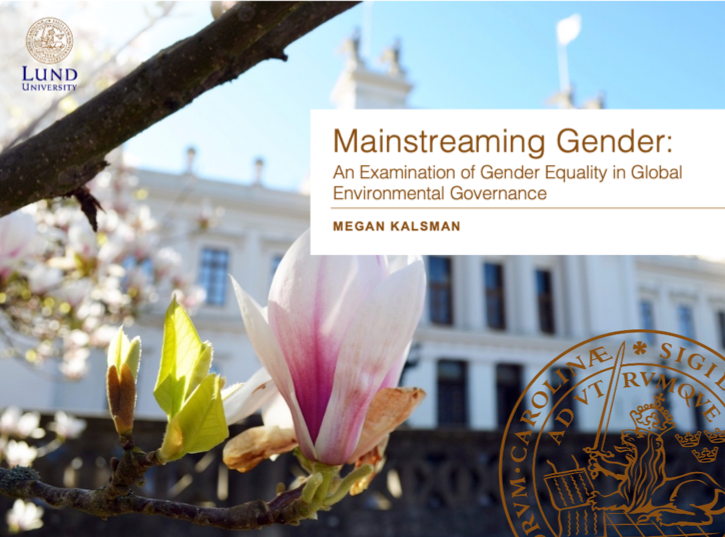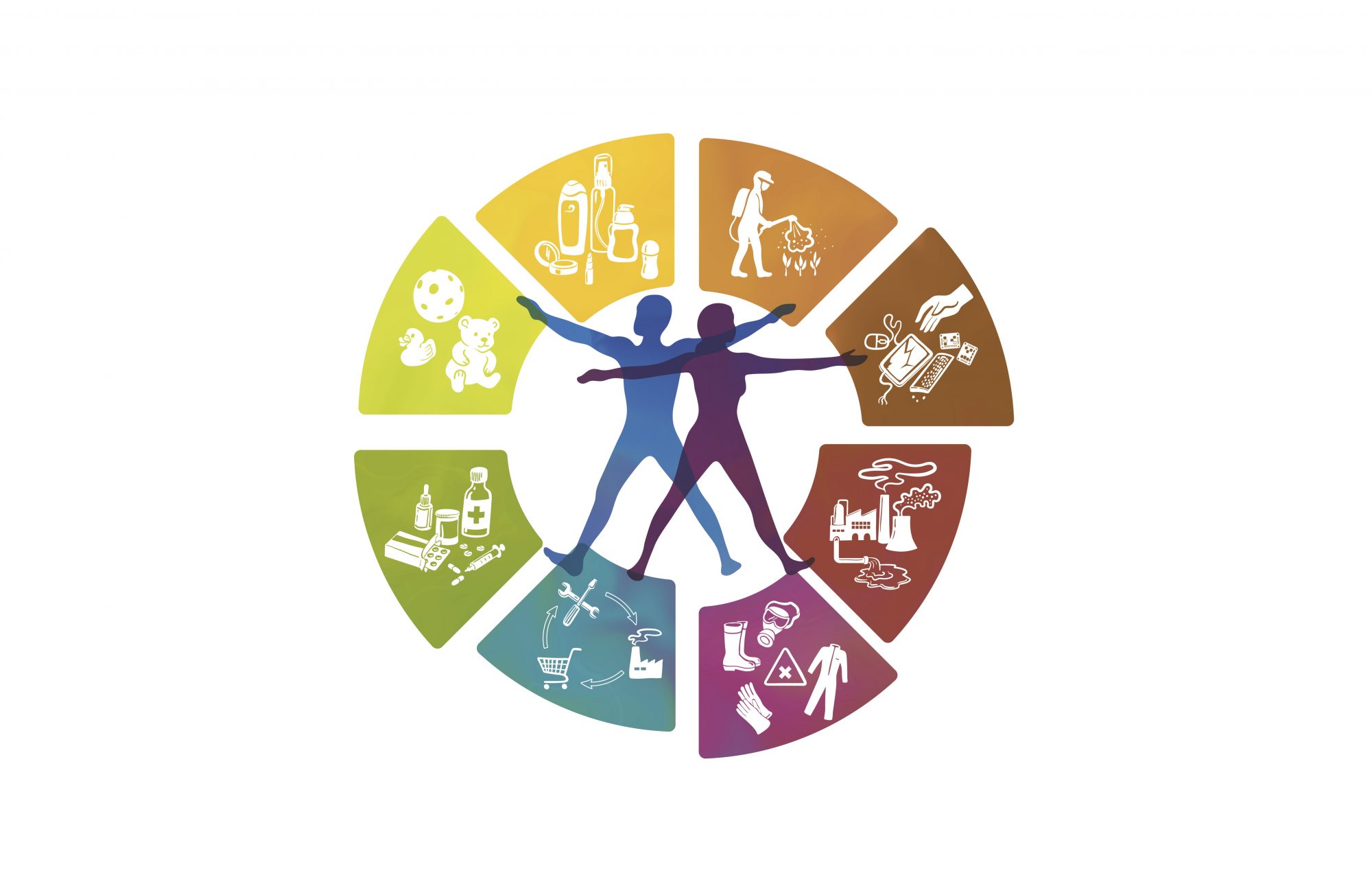#Expert-Blog Series: How to create a gender-just-healthy planet
by Megan Kalsman

Chemicals can have a disproportionately high impact on women’s health and wellness.
I observed this firsthand while employed by the City of San Francisco Department of the Environment in California, US. One of my responsibilities as a Commercial Toxics Reduction Assistant Coordinator included working with local governments to certify nail salons to encourage using fewer toxic chemicals and increasing the use of personal protective equipment, e.g., masks and gloves. I met with salon owners and nail technicians who had miscarriages, skin problems, and other health issues from exposure to the many chemicals used in nail salons, such as polish removers, thinners, acrylics, etc. The nail salon community in California employs a high proportion of women whose primary language is not English. Communicating the health risks to this population proved especially challenging but was ultimately very rewarding. The California Healthy Nail Salon Collaborative is just one example of environmental and gender justice which ultimately inspired me to continue my research on gender and chemicals.
As part of my master’s degree program at Lund University in Sweden, I completed a research project focused on gender equality and Multilateral Environmental Agreements (“MEAs”). I was intrigued by the ongoing work surrounding gender and chemicals on an international level and found that various MEAs have been incorporating gender equality into their processes. The research aim of this project was to gain an exploratory perspective on gender equality aspects in MEAs and how advancing gender equality goals can be mainstreamed in the United Nations (UN) political and administrative system. The thesis focused on international policies in recognition of the large impact that global environmental agreements have on national governments and the significant potential for positive change.
This led me to my three primary research aims:
(1) Investigating the terminology used in MEA treaty texts and how word choices can lead to various interpretations.
(2) Looking at the major activities and themes from those which had MEA gender action plans.
(3) Uncovering the challenges and barriers faced by the MEA Secretariats (the UN bodies which assists in the planning and implementation of the agreement [1]) and recommending opportunities for gender mainstreaming going forward.
The study analyzed nine different MEAs with a focus on chemicals and waste related agreements. For a comparison aspect, two ozone depletion agreements, one biodiversity convention, and one climate change convention which have had some inclusion of gender equality aspects in their work were also analyzed. Although this research focused on chemicals and waste agreements, I learned from various practitioners that other environmental areas such as climate change and water management issues had been somewhat explored and documented, whereas chemicals and gender interlinkages was a newer area of focus [2]. I interviewed MEA secretariats who had worked on or around gender aspects in efforts to gain a detailed perspective on their challenges, barriers, and potential opportunities to increase gender mainstreaming.
Research results:
When examining the language and terminology used in MEAs around gender, I found that women were referenced in the treaty texts sparingly. Women were often mentioned as part of a list – mostly included in vulnerable populations amongst workers, children, the elderly, etc. This portrayed women as part of a community that needs protection, rather than as agents of change. However, the Strategic Approach to International Chemicals Management (SAICM) global policy framework turned out to be an outlier in the MEA comparison. This framework included a significantly higher number of mentions around gender and women in the SAICM texts (Dubai Declaration on International Chemicals Management, Overarching Policy Strategy, Global Plan of Action, Annexes and Resolutions by the International Conference on Chemicals Management) compared to the other more traditional style MEAs. SAICM is a non-binding framework [3] which makes it unique from the other eight agreements reviewed.
At the time this research was conducted (Spring 2021), there were four different MEA gender action plans found among the nine selected agreements. One of which was still in the review process and not yet finalized. Two chemicals and waste MEAs, one biodiversity, and one climate change agreement gender action plans were assessed. The top five most referenced activities were communication and awareness, stakeholder collaboration, baseline and reporting progress, implementation, and linkages to social and environmental issues amongst many other action items.
From speaking with the MEA secretariats, major takeaways were that the work to include a gender perspective is occurring, but the lack of funding and resources remains a persistent challenge. Despite this, gender action plans and action plan updates are still progressing, and data collection continues. Areas of opportunity that came up during these discussions were the importance of stakeholder collaboration and the benefits of working with other actors in the women and environment nexus and others such as the medical field.
Research recommendations:
- Gender and women considerations should be included in the SAICM Beyond 2020 texts. This can set a precedent for future gender mainstreaming work to be completed. If it’s not in the treaty text, the work might not get done.
- SAICM should develop a gender action plan with particular attention to accountability measures, specifying targets and intended results, reporting on effectiveness of the plan, and a focus on communication and awareness with stakeholders and the public.
- Prioritizing funding for gender mainstreaming work within the UN system is crucial. For example, obtaining funding for pilot projects may demonstrate the viability of the work that parties are doing around gender equality — see for example the 2017 BRS Gender Heroes pilot projects [4]. Continuing collaboration with stakeholder groups and MEA secretariats is key to push the gender mainstreaming work forward.
Conclusions and major takeaways:
Gender mainstreaming work is ramping up within the chemicals and waste-related international environmental agreements. However, with the SAICM intersessional meetings postponed until further notice, this work must continue or risk losing momentum. I strongly believe in the importance of sustaining and growing an intersectional perspective in this work. Key stakeholders from different backgrounds need to be heard and “in the room” when decisions are being made. Integrating a gender lens within environmental agreements and this important work will promote moving the needle towards a more sustainable and just future for all.
To read this thesis in its entirety, visit here.
[1] https://www.informea.org/en/terms/secretariat
[2] WECF & UNEP. (2016). Women and Chemicals: The impact of hazardous chemicals on women A thought starter based on an experts‘ workshop. 66. https://www.wecf.org/77912/
[3] https://www.informea.org/en/treaties/strategic-approach-international-chemicals-management
Interested in the research results? Contact Megan Kalsman here.
